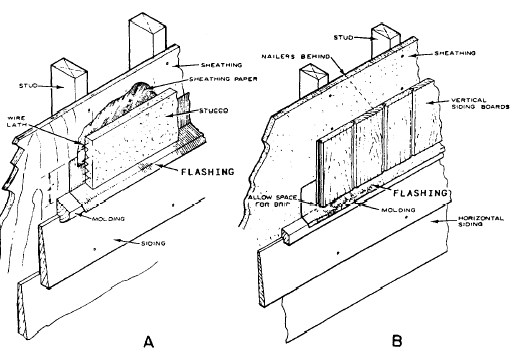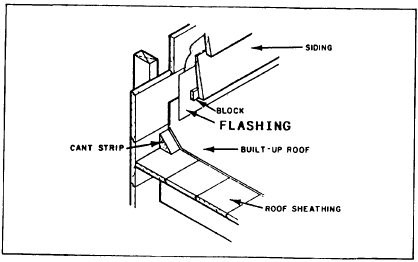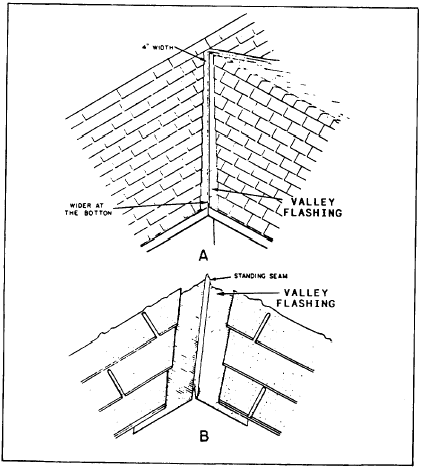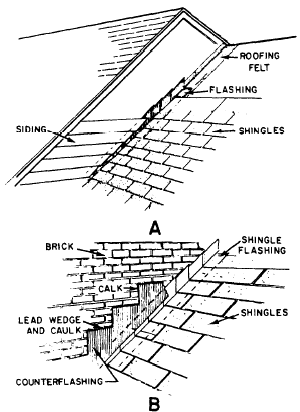|
Flashing FLASHING is specially constructed pieces of corrosion-resistant
metal or other materials used to
protect buildings from water seepage. Flashing should
be installed to prevent penetration of water and
other moisture in the form of rain or melted snow
at the junction of material changes, chimneys,
and roof-wall intersection. Flashing should
also be used over exposed doors, windows, and
roof ridges. Figures 6-53 through 6-57 show areas
or locations in which some type of flashing is
required.
Flashing materials used on roofs may be asphalt-saturated
felt, metal, or plastic. Felt flashing
is generally used at ridges, hips, and valleys.
However, metal flashing made of aluminum,
galvanized steel, or copper, is considered superior
to felt.

Figure 6-53.-Use of flashing at material changes: A. Stucco above, siding
below; B. Vertical siding above, horizontal below,

Figure 6-54.-Use of flashing at building line on built-up roof.

Figure 6-55.-Valley flashing: A. Valley; B. Standing seam.

Figure 6-56-Flashing at roof and wall intersection: A.
Wood siding wall; B. Brick wall.
|


|

